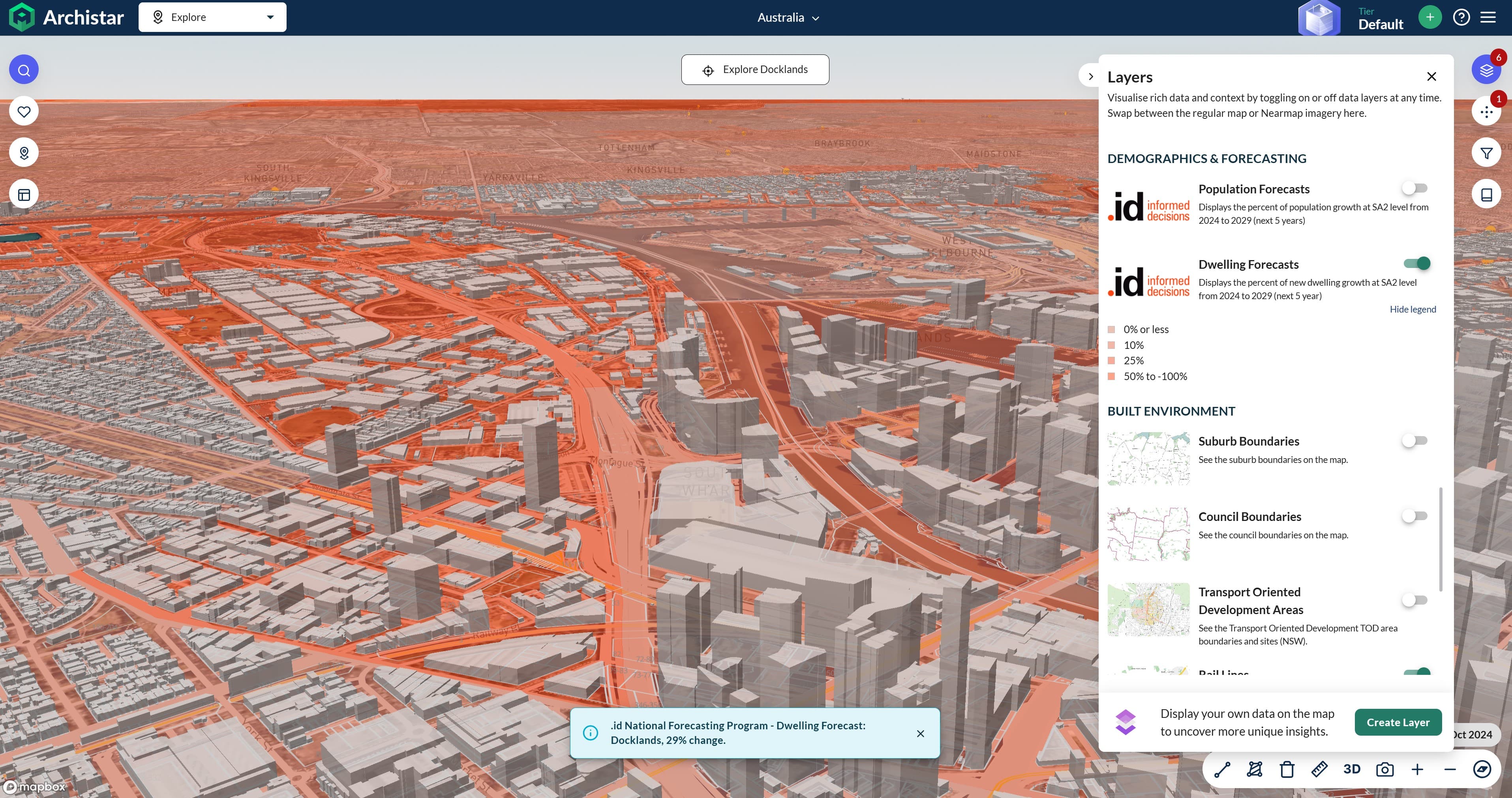By 2044, Australia will have nearly 150,000 fewer primary school-aged children than previously forecast. That's the impact of an update to our forecasts to account for new, up-to-date information about the birth rate in Australia.
Recent data from the ABS shows Australia's birth rate has fallen to its lowest point on record. In this blog, we explain how we've factored this information into our latest population forecasts, and what this means for anyone planning schools, childcare centres, tutoring services, playgrounds, or other facilities for young people.
How does a new birth rate assumption impact our population forecasts?
Even before the ABS released the latest birth rate data, our demographers had updated our population forecasts to account for this trend. As a result of this change, our forecasts have been revised down by 150,000 primary-school aged children across Australia by 2044.
However, in the shorter term, the revised forecasts show an increase in this age group - an increase of 32,000 by 2029 in New South Wales alone.
How can this be?
The birth rate is just one of many factors shaping the future population
The birth rate is just one of many factors that impact population change. Our National Forecasting Program also accounts for overseas and interstate migration, death rates, the current age structure of local areas, suburb lifecycles and many other factors.
.png?width=1920&height=1080&name=The%20National%20Forecasting%20Program%20(2).png)
An increase in overseas migration
While we've updated our birth rate assumption in our latest forecasts, we have also reflected the latest information we have about the number of overseas migrants we expect to come to Australia in the years ahead. In fact, we expect the post-pandemic spike in overseas migration will last longer than official government forecasts indicate (read more about this on our forecast update briefing page, where we share the big stories and analysis from our 2024 update.
So what's the new forecast?
The table above shows the change from our revised forecasts. Here's the updated forecasts for primary school aged children in each state. While overseas migration drives primary-school aged population up in the first ten years, there is a decline in many states later into the forecast period as a result of the lower birth rate.
Do you need help planning education or children's services?
Learn more about how we support education planning or schedule a call with one of our forecasters →
Why are we changing our birth rate assumption?
The birth rate (officially the Total Fertility Rate, or TFR) is an important assumption in our population forecasts. The TFR accounts for the propensity of women to have a child in each year of their life between the ages of 15 and 49.
Throughout the pandemic period, the fertility rate assumption in our forecasts was based on a research paper published in 2020 that was commissioned by the Centre for Population, and authored by Professor Peter McDonald, an Australian demographer who is an internationally recognised authority on fertility trends.
In the years since that paper was published, we’ve seen evidence that the birth rate has continued to fall, remaining below the National TFR of 1.776 assumed in the 2020 research.
The recent history of the fertility rate in Australia reflects interesting milestones in contraceptive technology, changing social norms and gender roles and economic incentives. Check out Glenn’s blog for a tour from the 60’s right up to last year, and a useful definition of the Total Fertility Rate (TFR).
What is our new birth rate assumption?
In version 5.2.0 of our national forecasts, we have assumed a TFR of 1.6 (the orange line in the chart above), which adopts the medium series birth rate assumption from the ABS population projections. This is the lowest rate seen since data has been collected, and follows an emerging trend of more Australian couples, choosing not to have children, or to have just one.
The National Forecasting Program accounts for a significant variance in fertility rates between each state and territory.
Why we forecast the birth rate will remain low
When you consider the social, economic and demographic factors behind the steadily declining fertility rate, the most realistic assumption is the fertility rate in Australia will not be trending back toward the levels of the 50s and 60’s or even the 80’s and 90’s anytime soon. In fact, a 2024 study published in The Lancet suggests the Global Total Fertility Rate will drop to 1.45 by 2050, and to 1.32 by 2100.
Women are having children later in life, which means they’re likely to have fewer children in their lifetime. There are also economic considerations, such as the high costs of childcare and other expenses of raising a family.
Jim Chalmers recently said it would be “better if birth rates were higher...” while acknowledging “..people will make their own choices and I don’t pretend for a moment that government should direct those choices, but we want to make it easier for people to have bigger families if they want to (Sydney Morning Herald, 10 May 2024).
However, Peter McDonald simply puts it down to “people becoming accustomed to a child-free lifestyle”.
This revision does not immediately impact population, however the trend becomes apparent when looking forward 20 years. For example NSW will grow by 50,000 primary aged children between 2024 and 2034, however the following decade will experience a decline in the age group. This is most apparent in NSW and VIC. QLD and WA despite the decline in birth rate are benefiting from interstate migration and forecast to grow in the age group, most likely due to families moving into the State.
Keeping an eye on this TFR, and predicting the long term impacts of such a trend helps us predict Australia's demographic make-up in the future, helping strategic planners and organisations make informed decisions on capital infrastructure and major projects for specific age-groups.
We can help you plan for the future population - of any age group - in your local area
Population forecasts from our National Forecasting Program provide detailed year-by-year projections for all age groups, not just primary school children. These independently produced forecasts are essential for infrastructure and service planning, offering nationally-consistent, detailed demographic data across local areas throughout Australia.
This forecast information is available in one-off reports for a specific area such as a school catchment or retail precinct, to hotspot reports that identify the top growth areas within a region or data partnerships that give you a comprehensive forecast for population and housing across a region, state or the nation.
Email forecasting@id.com.au or learn more here about how we help companies of all sizes invest in the right place at the right time.

.png?width=1920&height=1080&name=The%20National%20Forecasting%20Program%20(2).png)








